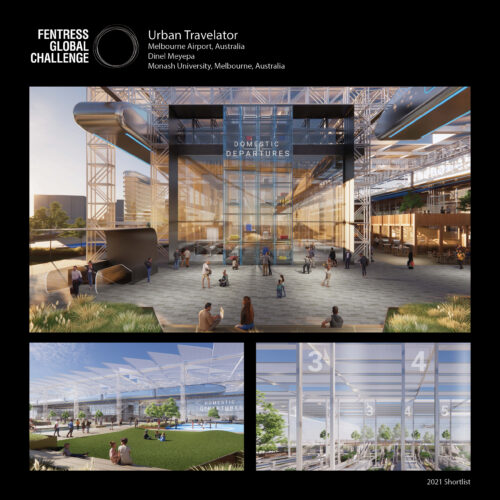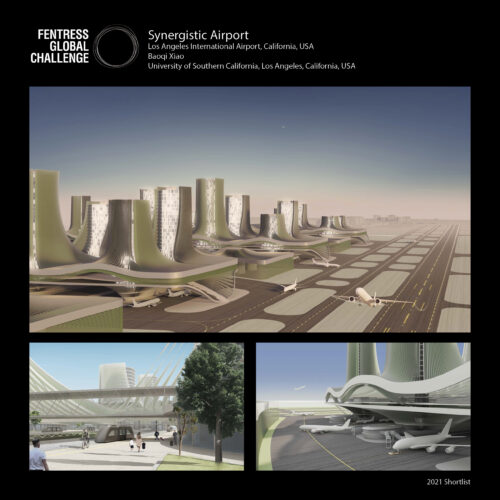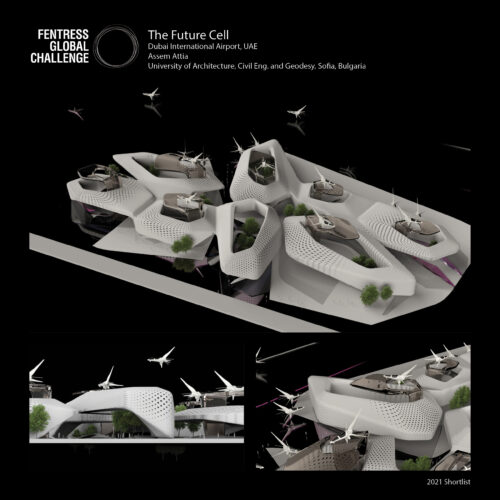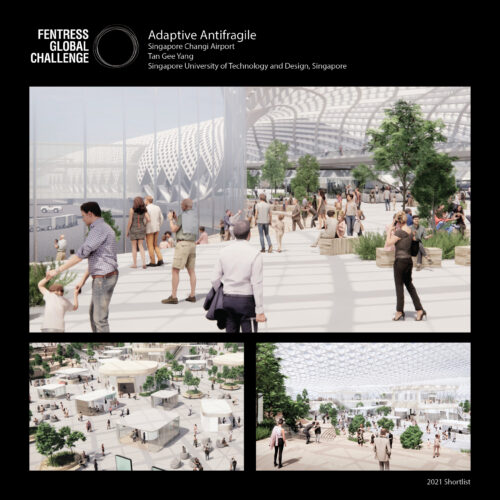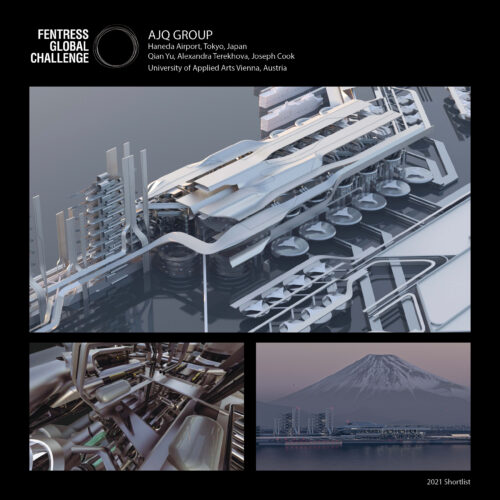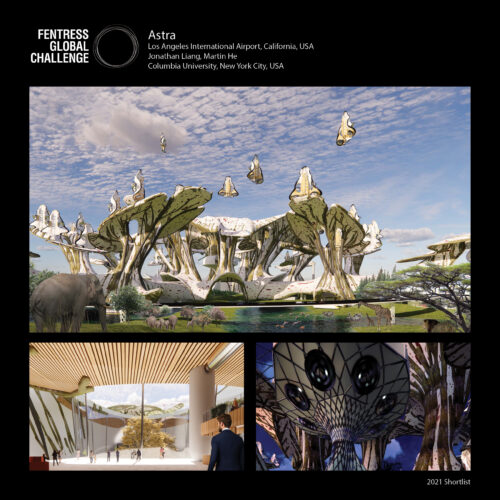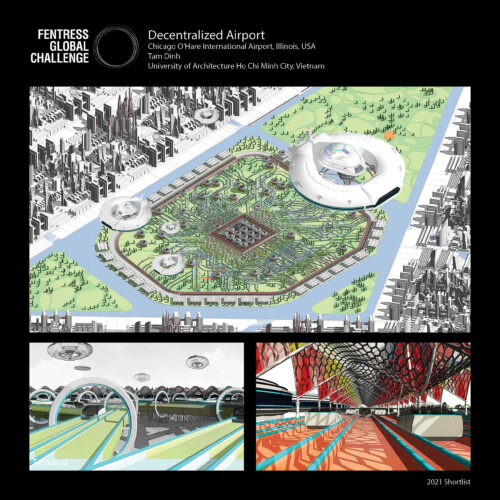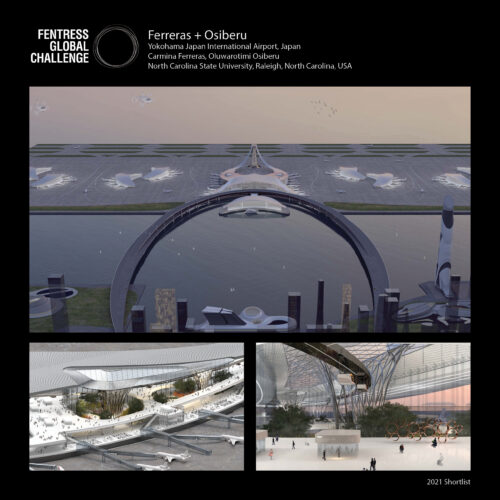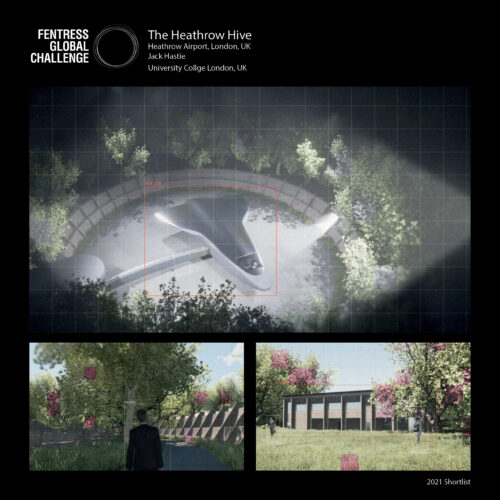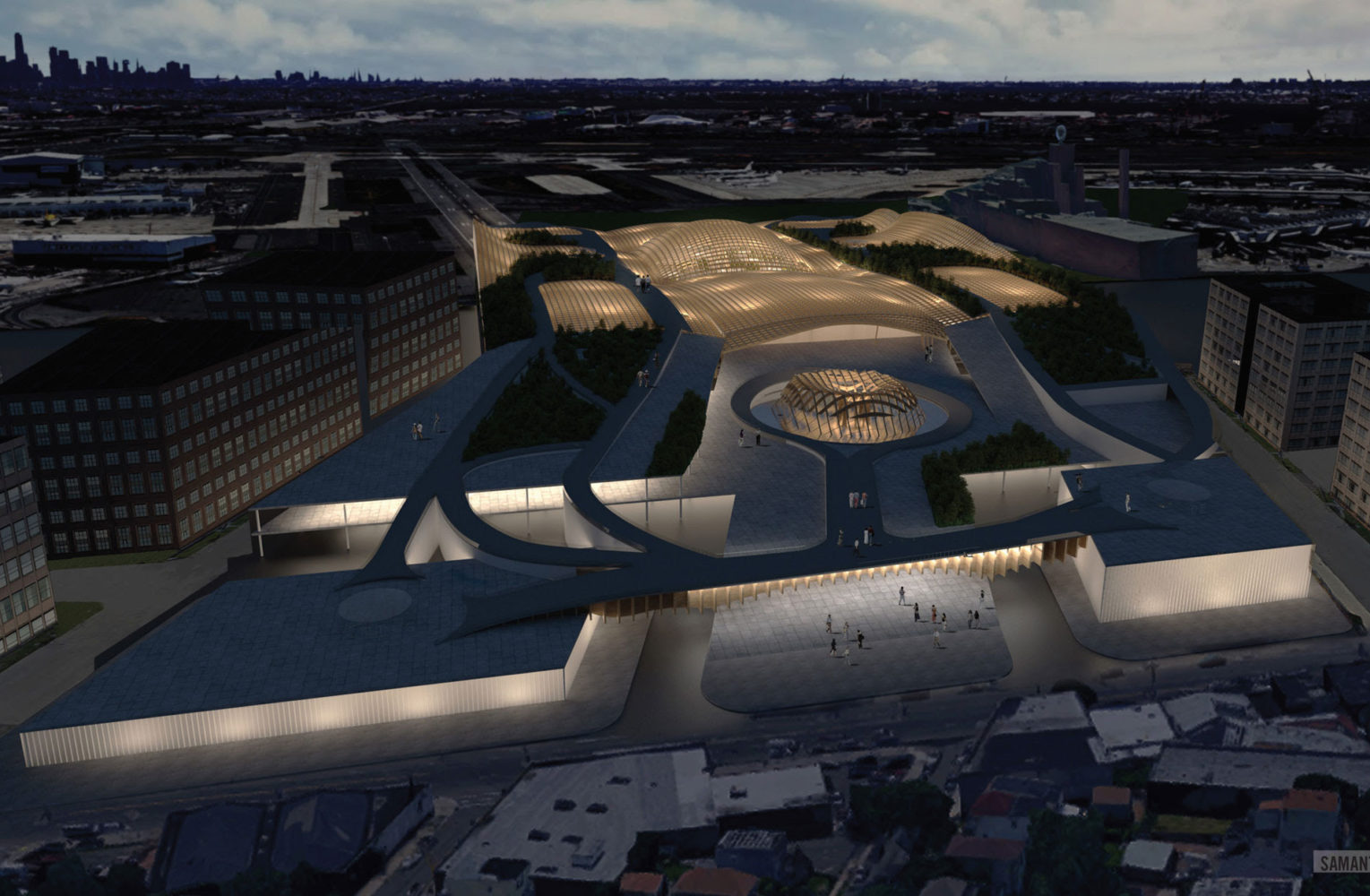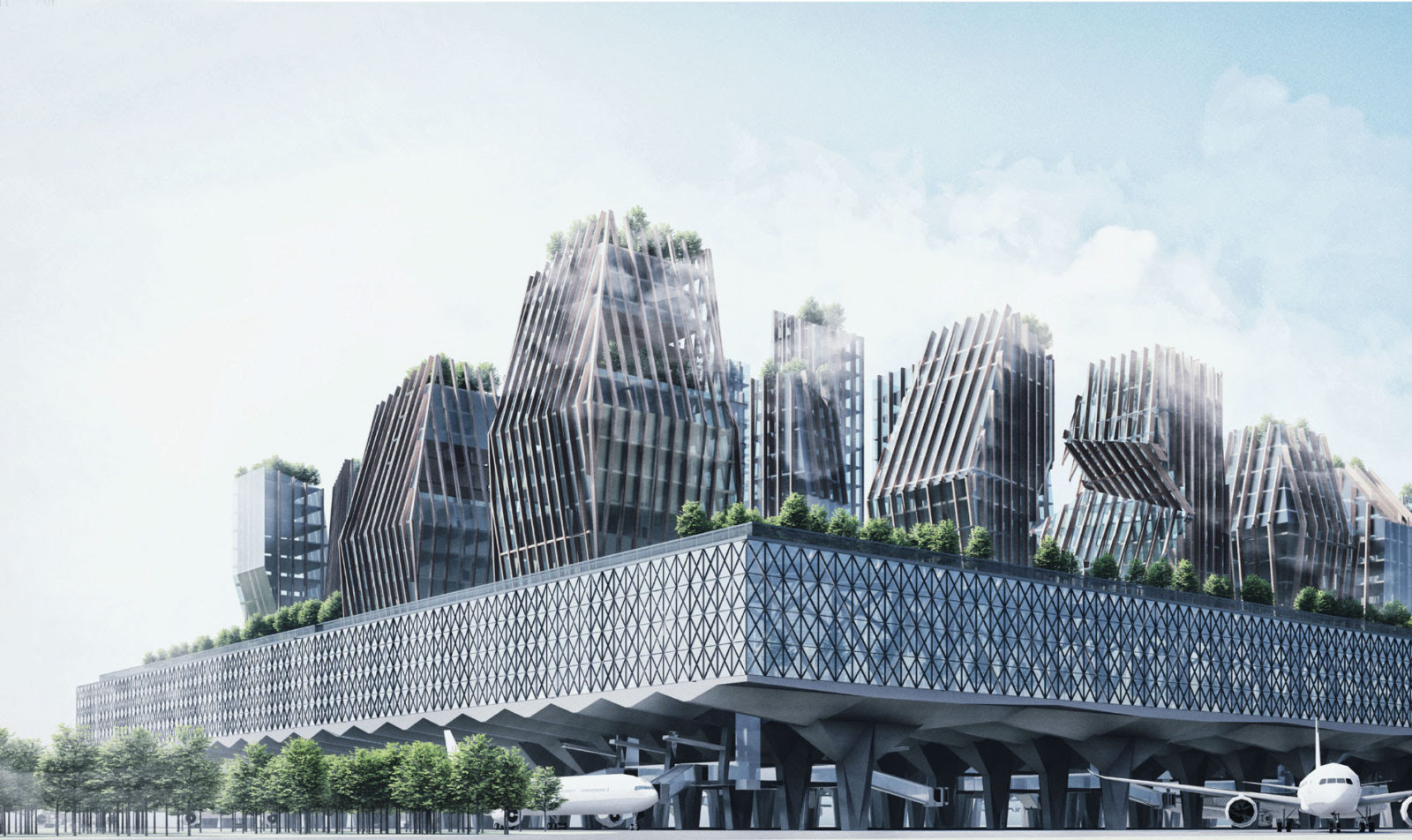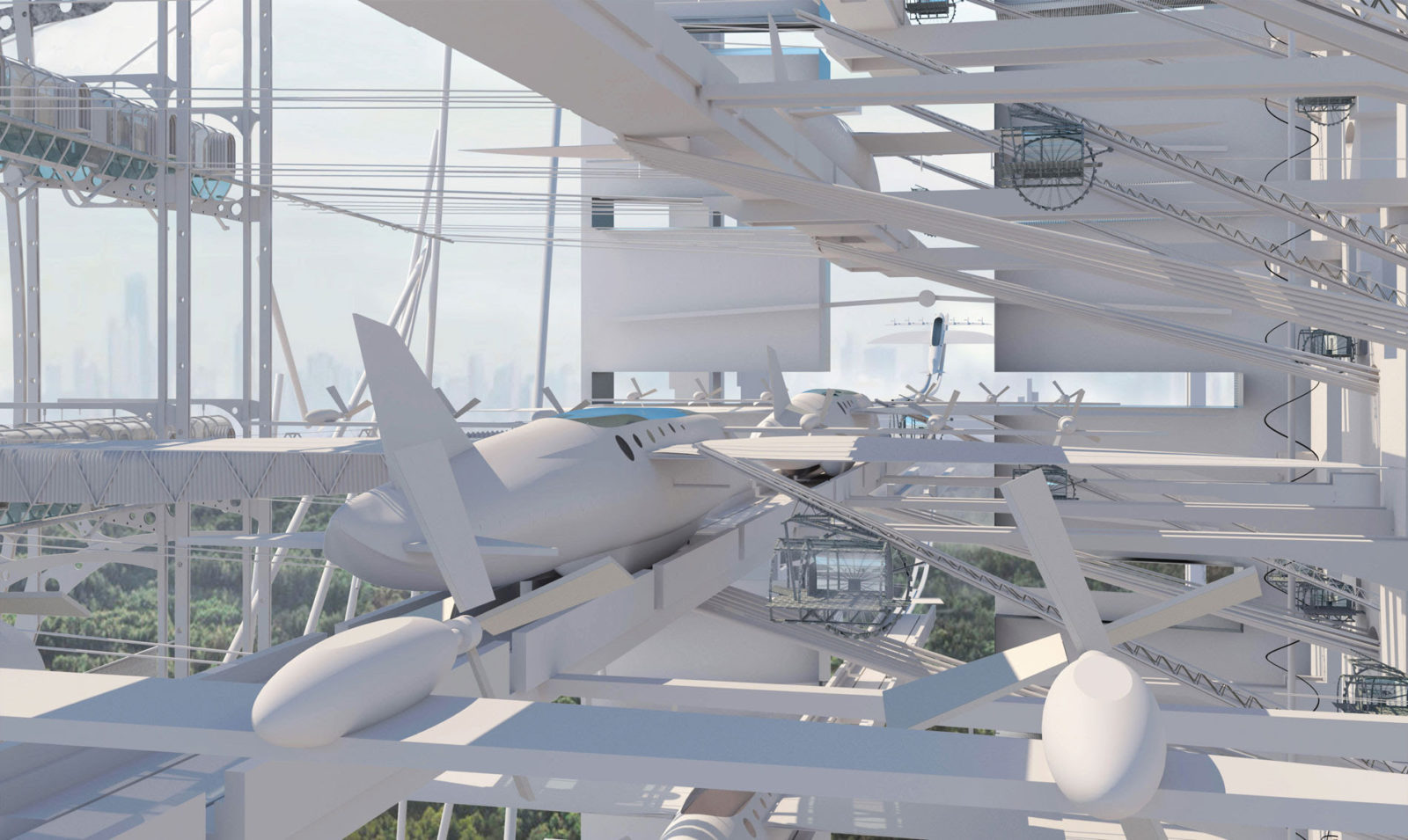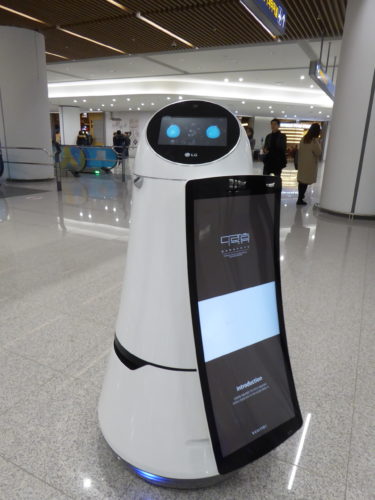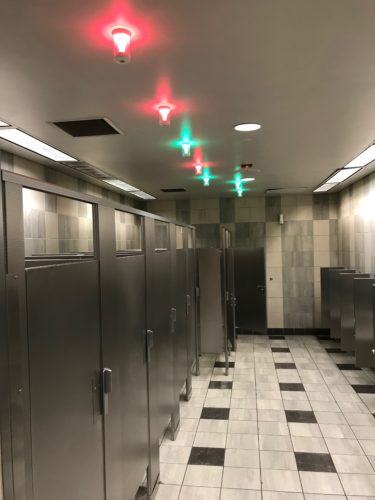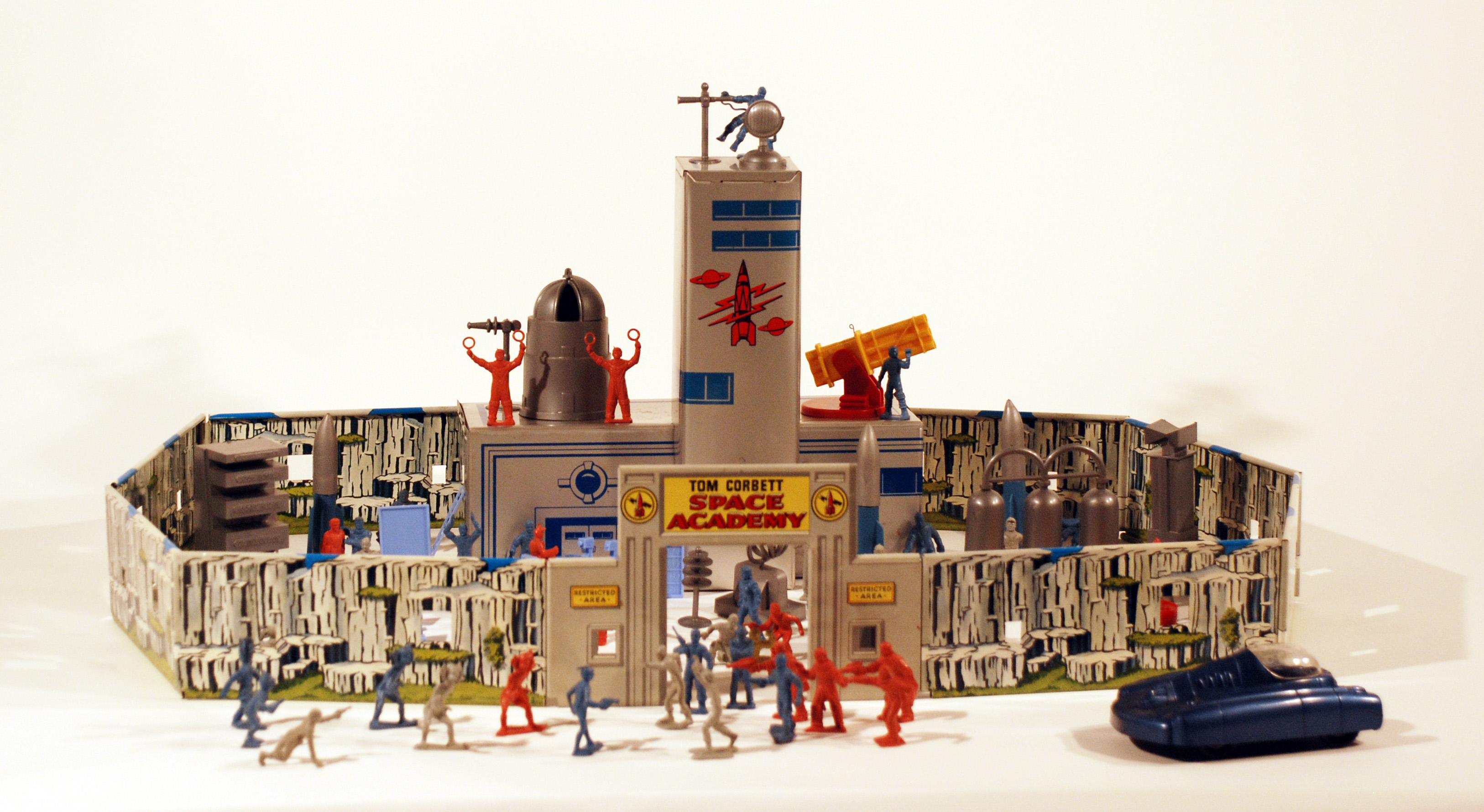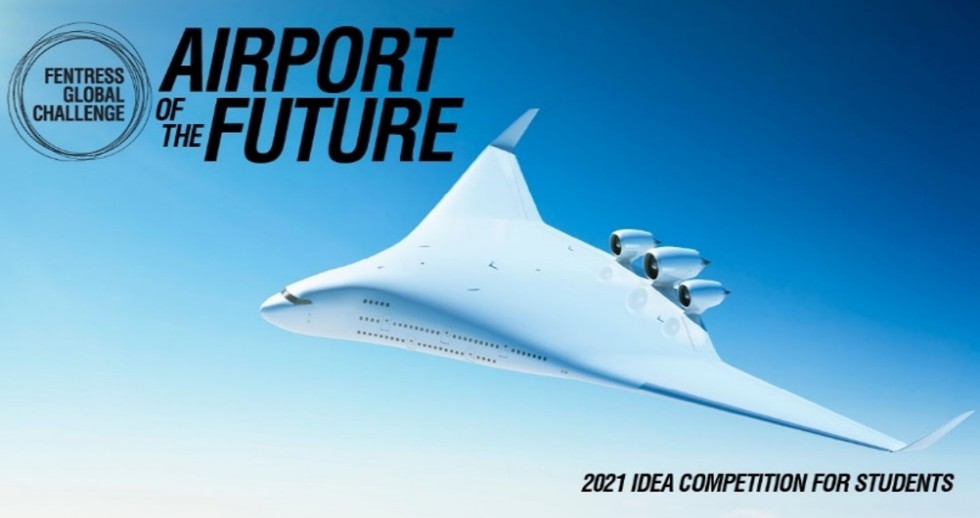
What will the airports of the future be like?
We hope to find movie theaters, art galleries, salons, and someplace to do laundry.
Fentress Architects asked architecture students from around the world what they thought about the airport of the future for its annual Fentress Global Challenge (FGC), This year’s competition challenged students to envision airport mobility in the year 2100.
Students could choose between locating their terminals at an existing airfield, such as at Hartsfield-Jackson Atlanta International (ATL), or at a yet undeveloped site.
“Various modes of transport were explored including pods for intra-airport transport. Mag-lev cars, drones, hyperloops, hydrofoils, and air-rails were among the methods of inter-airport transport proposed,” Fentress reports. “Additionally, several different types of aircraft were studied including anti-gravity, vertical take-off, rockets, and spaceships.”
Entries were evaluated on five criteria, including technology and sustainability. Some submissions envisioned airports that would be able to create their own biofuel from algae and symbiotic bacteria. Others created floating structures that sought to restore coral reefs and ocean ecosystems.
Here are images from the ten shortlisted entries. A jury of renowned airport architects, directors, planners, and scholars will announce a winner on December 1, 2021, and there will be cash prizes for First, Second, and Third Place. Two People’s Choice Awards will be given, so you can cast your vote here.
